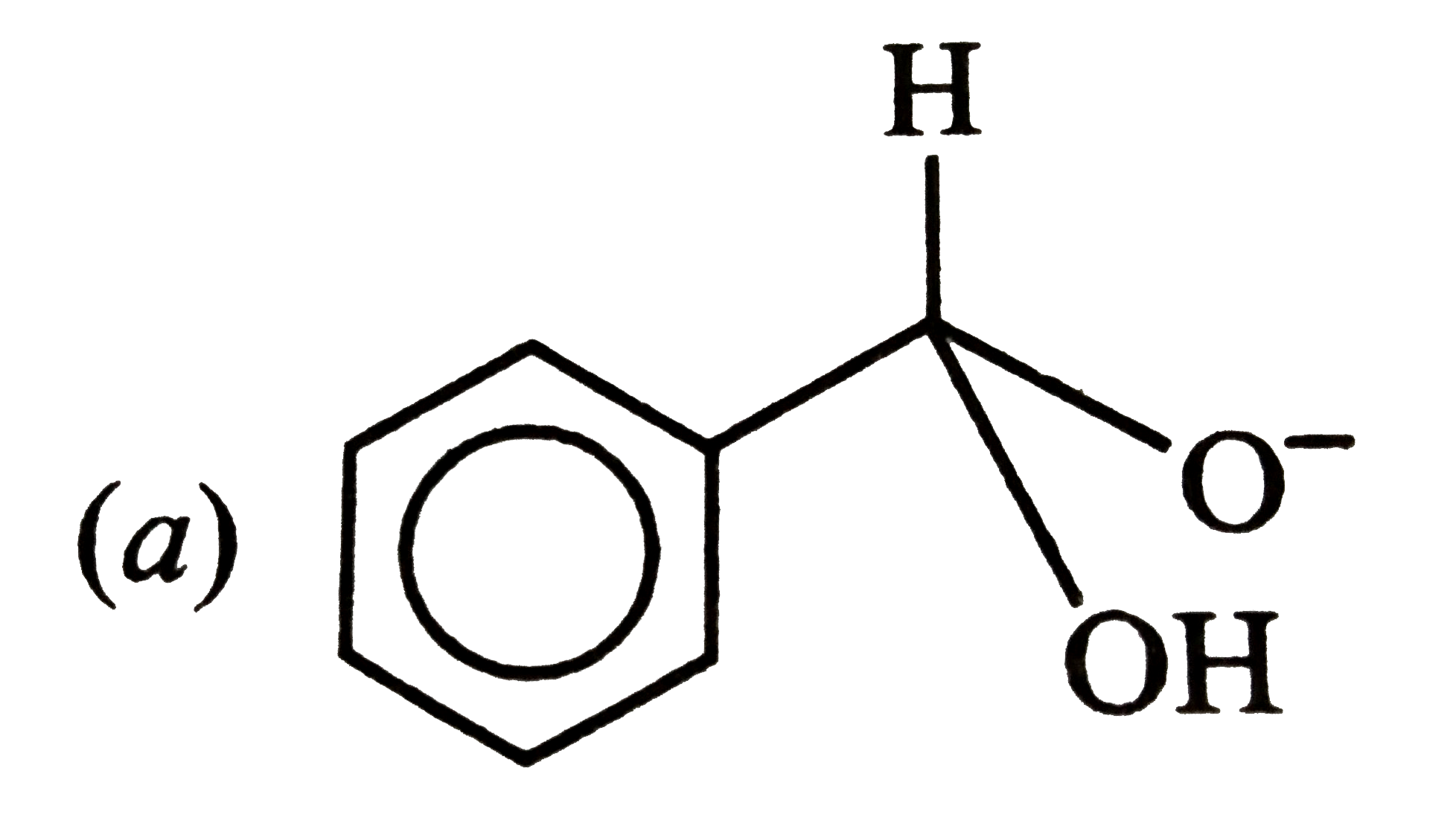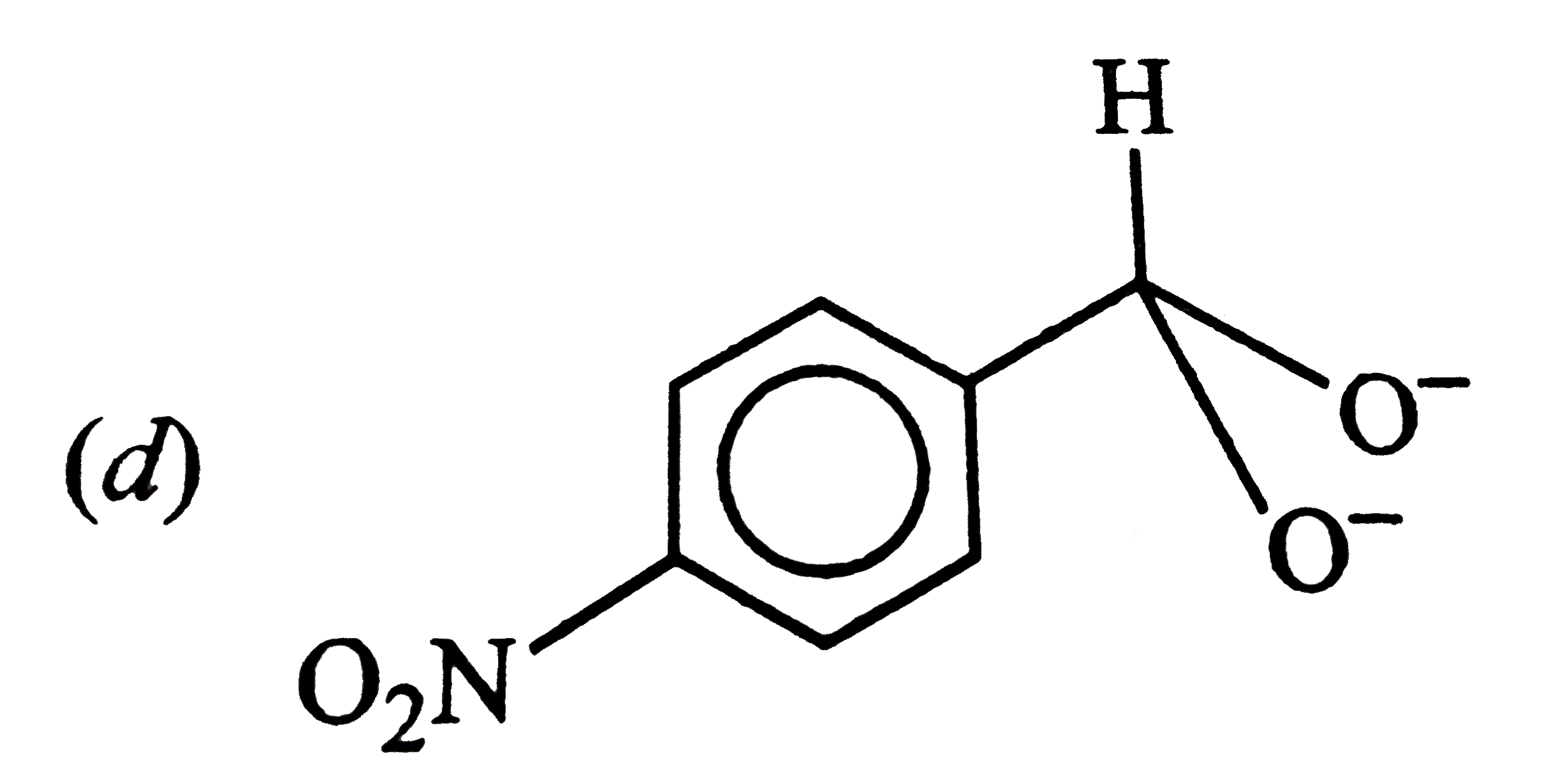In Cannizzaro reaction-
Aldehyde is converted into alcohol
Alcohol is converted into aldehyde
Primary amine is converted into isocyanide
Acid is converted into amine
The correct Answer is:A
Step-by-Step Solution:
1. Understanding Cannizzaro Reaction: The Cannizzaro reaction is a chemical reaction that involves the disproportionation of aldehydes that lack alpha-hydrogens in the presence of a strong base.
2. Identifying the Reactant: The reactant in the Cannizzaro reaction must be a carbonyl compound, specifically an aldehyde without alpha-hydrogens. This means that the carbon atom adjacent to the carbonyl group (alpha-carbon) does not have any hydrogen atoms attached to it.
3. Reaction Conditions: The reaction occurs in a basic medium, typically using sodium hydroxide (NaOH) as the catalyst.
4. Products of the Reaction: The products of the Cannizzaro reaction are:
- An alcohol (reduction product)
- A carboxylic acid salt (oxidation product)
5. Disproportionation Nature: The Cannizzaro reaction is classified as a disproportionation reaction because one species is oxidized while another is reduced. In this case, the aldehyde is converted into both an alcohol (reduction) and a carboxylic acid salt (oxidation).
6. Example Reaction: For instance, if we take formaldehyde (HCHO) as the aldehyde:
- The reaction with NaOH will yield methanol (CH3OH) as the alcohol and sodium formate (HCOONa) as the carboxylic acid salt.
7. Analyzing Options:
- Option 1: Aldehyde is converted into alcohol - This is correct.
- Option 2: Alcohol is converted into aldehyde - This is incorrect as the reaction does not involve conversion of alcohol to aldehyde.
- Option 3: Primary amine is a reactant - This is incorrect as primary amines do not participate in this reaction.
- Option 4: Acid is converted into amine - This is also incorrect as there is no acid involved in the reactants.
8. Conclusion: The correct answer is Option 1, which states that an aldehyde is converted into an alcohol.
---
- An alcohol (reduction product)
- A carboxylic acid salt (oxidation product)
- The reaction with NaOH will yield methanol (CH3OH) as the alcohol and sodium formate (HCOONa) as the carboxylic acid salt.
- Option 1: Aldehyde is converted into alcohol - This is correct.
- Option 2: Alcohol is converted into aldehyde - This is incorrect as the reaction does not involve conversion of alcohol to aldehyde.
- Option 3: Primary amine is a reactant - This is incorrect as primary amines do not participate in this reaction.
- Option 4: Acid is converted into amine - This is also incorrect as there is no acid involved in the reactants.
Topper's Solved these Questions
- BOOK - MOTIONCHAPTER - CARBONL COMPOUNDSEXERCISE - EXERCISE - 2 (LEVEL -I)46videos
CARBONL COMPOUNDS
- BOOK - MOTIONCHAPTER - CARBONL COMPOUNDSEXERCISE - EXERCISE -2 (LEVEL-II)18videos
CARBONL COMPOUNDS
- BOOK - MOTIONCHAPTER - CARBONL COMPOUNDSEXERCISE - EXERCISE - 4 LEVEL -II24videos
CARBONL COMPOUNDS
- BOOK - MOTIONCHAPTER - BIOMOLECULES & POLYMERSEXERCISE - EXERCISE - 4 (LEVEL II)17videos
BIOMOLECULES & POLYMERS
- BOOK - MOTIONCHAPTER - CARBOXYLIC ACIDEXERCISE - Exercise - 4 (LEVEL - 2 )22videos
CARBOXYLIC ACID
Similar Questions
Knowledge Check
- Question 1 - Select One
In Cannizzaro's reaction an aldehyde undergoes
AOxidationBreductionCoxidation and reductionDneither oxidation nor reduction - Question 2 - Select One
In Cannizzaro's reaction fo formaldehyde involves an
AIntramolecular shift of protonBIntramolecular shift of hydrideCIntermolecular shift of protonDIntermolecular shift of hydride - Question 3 - Select One
In a Cannizzaro reaction, the intermediate that will be best hydride donor is
A B
B C
C D
D

